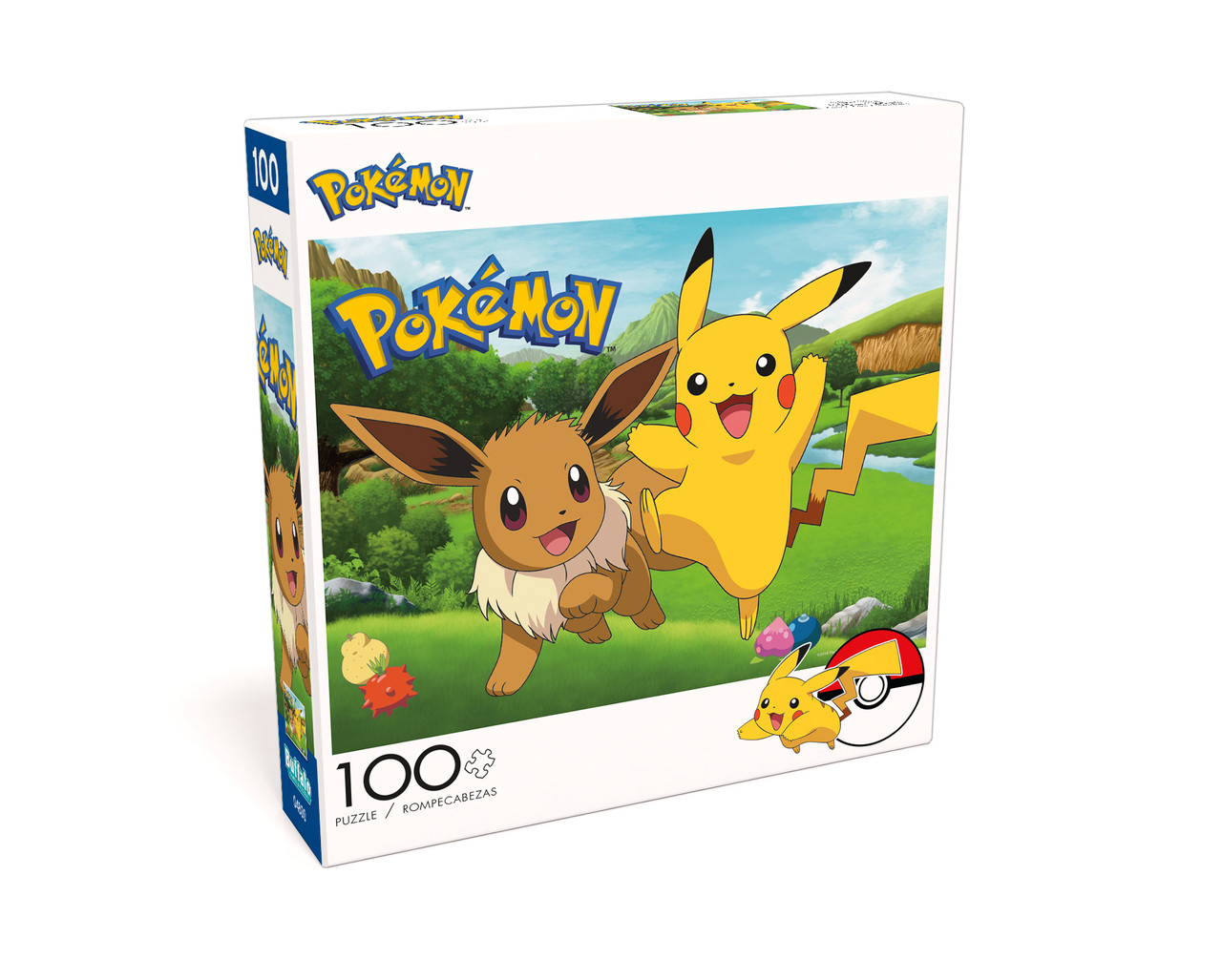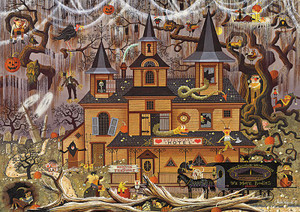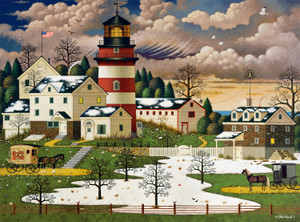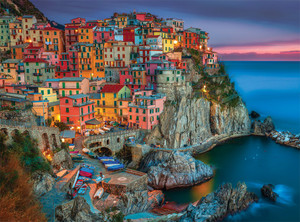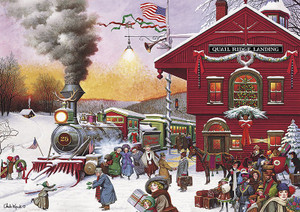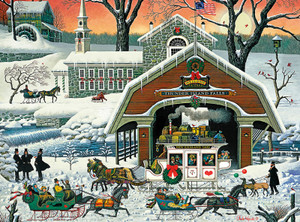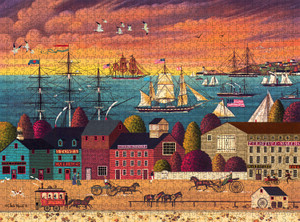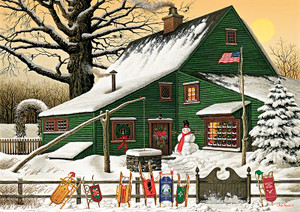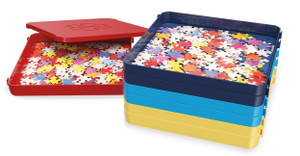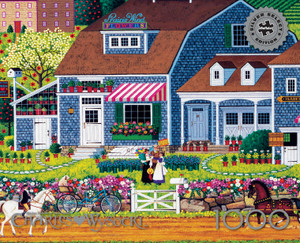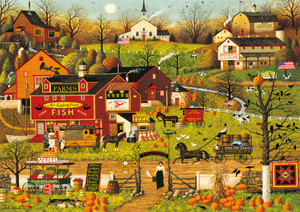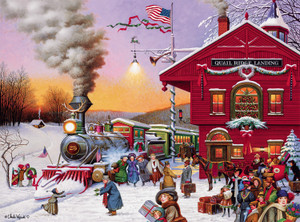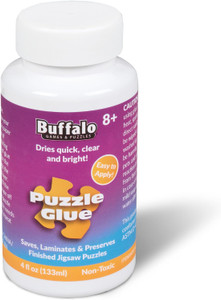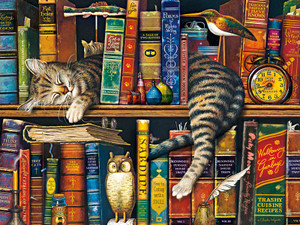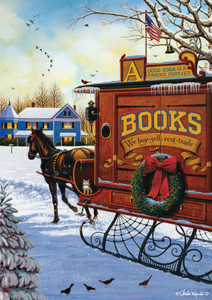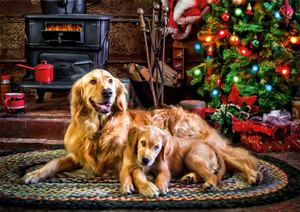Posted by Buffalo Games on Apr 13th 2022
How Long Does It Take to Do a 100-Piece Jigsaw Puzzle?
During the 19th century, if a person was lucky enough to own a deluxe jigsaw puzzle, they were considered elite. Owning a puzzle became a status symbol—even King George III was an avid puzzler. Wealthy families used puzzles as educational tools.
Rich materials added to their elegance as well. The puzzles of yore consisted of mahogany and other hardwoods.
Today, you don’t need to be the King of England to own jigsaw puzzles, and it’s a good thing, too, because puzzles can benefit people of all ages. Whether you’re looking for 100-piece puzzles, 10,000-piece puzzles, or any other size, you’re in for a treat.
How Long Do Jigsaw Puzzles Take to Solve?
As you might imagine, the time it takes to finish a puzzle depends on several different factors. Some of them are easy to guess, such as the number of people working on the puzzle and the number of pieces in the puzzle.
The average times for completing puzzles are as follows:
- 100-piece puzzles: 2–3 hours
- 500-piece puzzles: 4–5 hours
- 1,000-piece puzzles: 9–11 hours
- 2,000-piece puzzles: 16–19 hours
Some puzzles have many more pieces than these. For those giants, plan on devoting even more fun-filled hours, and perhaps days, to their completion.
Factors That Influence Puzzle Completion Time
It stands to reason: The more difficult a puzzle is, the longer it will take to solve.
What else makes a puzzle more or less difficult? Factors affecting completion time include:
- The medium used for the image
- The size and shape of the puzzle pieces
- The color patterns of the image on the puzzle
These factors all influence a person’s ability to visually categorize pieces and the time it takes to match them up to one another.
The Medium Used for the Image
The medium describes the type of art initially employed to create the puzzle’s subject or picture. For example, the puzzle’s subject could be a painting or a photograph. A landscape painting would be more challenging to solve than a photograph of the same subject.
A landscape photograph would have sharp, clear borders and edges that separate colors, making it easier to figure out which pieces connect to continue the lines. On the other hand, the painting would be abstracted by things like softened details, idealized colors, and brushstrokes.
The Size of the Puzzle Pieces
The pieces themselves contribute to the difficulty of jigsaw puzzles, too. Larger pieces make a puzzle easier to solve because each piece contains more information, or clues, as to what other pieces it connects to.
The shape of puzzle pieces matters, too. When pieces are grid-cut with matching corners both ways, it makes jigsaw puzzles easier to solve. Strip-cut pieces, also called ribbon-cut or traditional-cut pieces, have interlocking corners with a few shape variations of the pegs and holes. They have repeating patterns and uniform rows.
Random-cut puzzles are the most difficult to solve because, as you might guess, the pieces follow no pattern. The shapes might repeat but are randomly scattered throughout the puzzle.
The Coloring of the Image
The coloring of the image on the puzzle is another factor that makes the puzzle easier or more challenging to solve. If a picture contains pieces that you can categorize according to color, it will be easier to solve.
For example, a landscape puzzle that depicts a green meadow and a blue sky would have pieces that belong distinctly to the sky and others that belong in the meadow. However, a puzzle that depicts nothing but sky would have no easy color classification to give you clues.
Making Jigsaw Puzzles Go Faster
You can follow some tips and tricks to make your puzzle-solving time even faster. One of the best things you can do is to properly set up your workspace and prepare ahead of time before you get started.
Accessories
Consider purchasing some accessories from an online puzzles store. The most helpful accessories are a roll-up puzzle mat in black or white (don’t get a multicolored one), sorting trays for all pieces, and some peel-and-stick adhesive (not glue) if you plan on preserving and/or hanging your 100-piece puzzle once it’s complete.
Lighting
Please don’t use a little floor lamp while you work; it can cast shadows on your pieces and make your project more of a challenge than you bargained for. Desk lamps and table lamps are better, while nice, bright overhead lights are best.
Your Workspace
Choose a solid-color surface that contrasts with your pieces if you won’t be using a roll-up puzzle mat to work. Many people enjoy solving puzzles on a white surface, but black is just as effective. Black or white surfaces will make the pattern in every piece easier to see.
Also, make sure you have enough room on all sides of your finished puzzle for loose pieces and some elbow room.
Your Plan of Attack
Before you begin, separate all of the pieces of your 100-piece puzzle according to color. Many people also sort out the edge pieces, as well. You may want to begin by putting the edge pieces together to form the border, then work your way in toward the middle.
Don’t spend too much time looking for one particular piece. If a piece seems to have disappeared, move on to another section of your puzzle. Eventually, that missing piece will turn up.
Completing 100-Piece Jigsaw Puzzles
Once your puzzle is complete, you can tear it apart and put it back in the box to reassemble at another time, or you can preserve it. Many people like to preserve their puzzles and even frame and hang them.
Puzzle preserving adhesive is the way to go if you’re interested in making the image permanent. These puzzle savers are available as glue (very messy) and as peel-and-stick adhesive backings. Go with the adhesive backing to save your puzzle, and you’ll enjoy your work of art for many years to come with no fuss and no mess.
